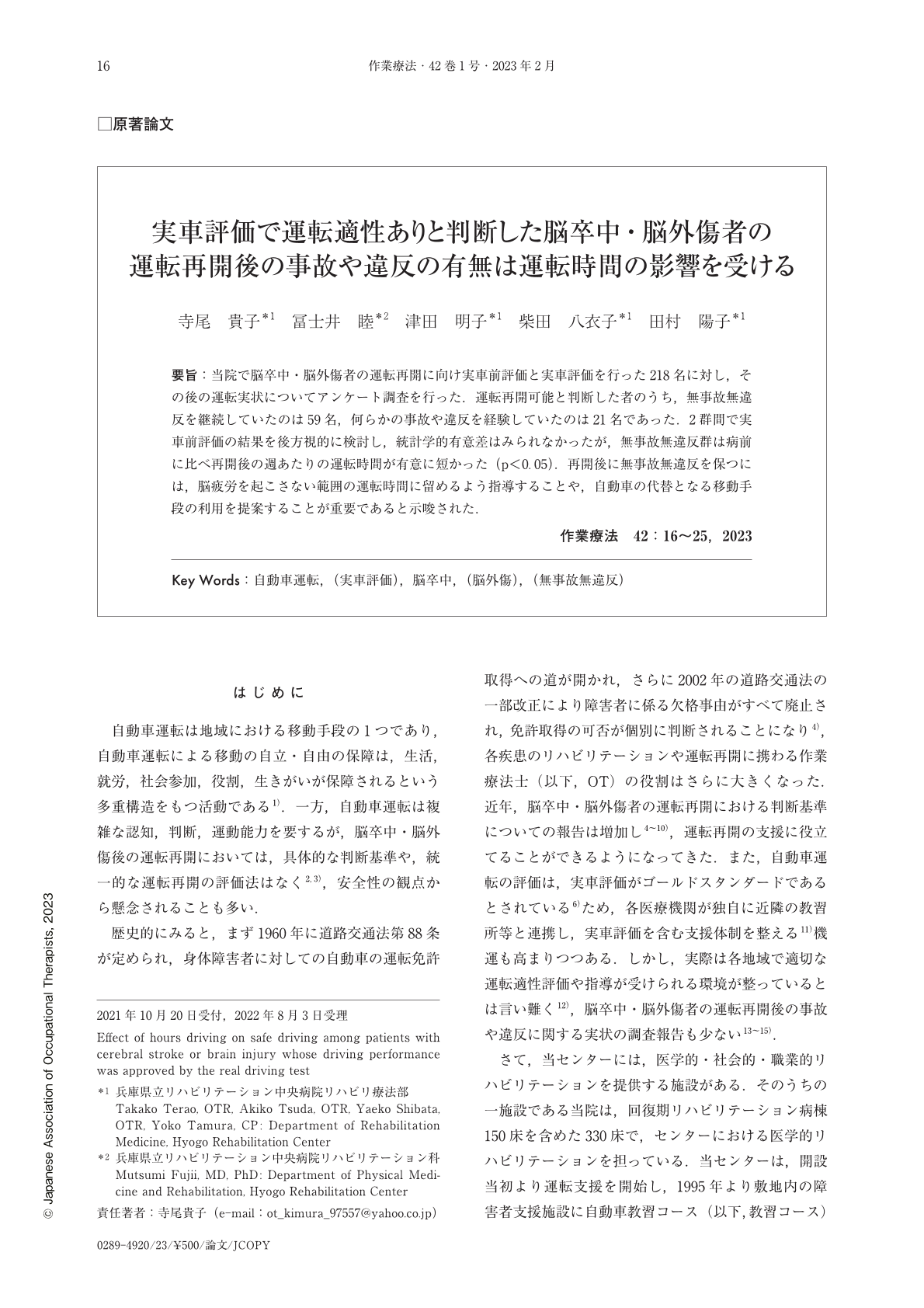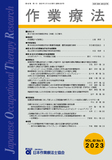Japanese
English
- 販売していません
- Abstract 文献概要
- 1ページ目 Look Inside
- 参考文献 Reference
- サイト内被引用 Cited by
要旨:当院で脳卒中・脳外傷者の運転再開に向け実車前評価と実車評価を行った218名に対し,その後の運転実状についてアンケート調査を行った.運転再開可能と判断した者のうち,無事故無違反を継続していたのは59名,何らかの事故や違反を経験していたのは21名であった.2群間で実車前評価の結果を後方視的に検討し,統計学的有意差はみられなかったが,無事故無違反群は病前に比べ再開後の週あたりの運転時間が有意に短かった(p<0.05).再開後に無事故無違反を保つには,脳疲労を起こさない範囲の運転時間に留めるよう指導することや,自動車の代替となる移動手段の利用を提案することが重要であると示唆された.
This research investigated safe driving for post-stroke/brain injury patients who had tried to resume driving. Using a questionnaire, we obtained 80 responses from patients who had passed the real driving test ; 59 drove without incidents, while 21 experienced accidents and/or violations. No statistically significant data comparing the neurocognitive performances between these 2 groups were collected, retrospectively. However, only the non-incident group showed a significantly shorter driving time per week after resuming driving compared to before onset of disease (p<0.05). We conclude that driving without incidents after cerebral stroke or brain injury can be sustained with appropriate adaptation to a lifestyle with automobiles. It is important for occupational therapists to advise patients to limit driving before the onset of brain fatigue and to consider transportation alternatives in order to prevent long drive and excessive frequent short-time driving.

Copyright © 2023, Japanese Association of Occupational Therapists. All rights reserved.


